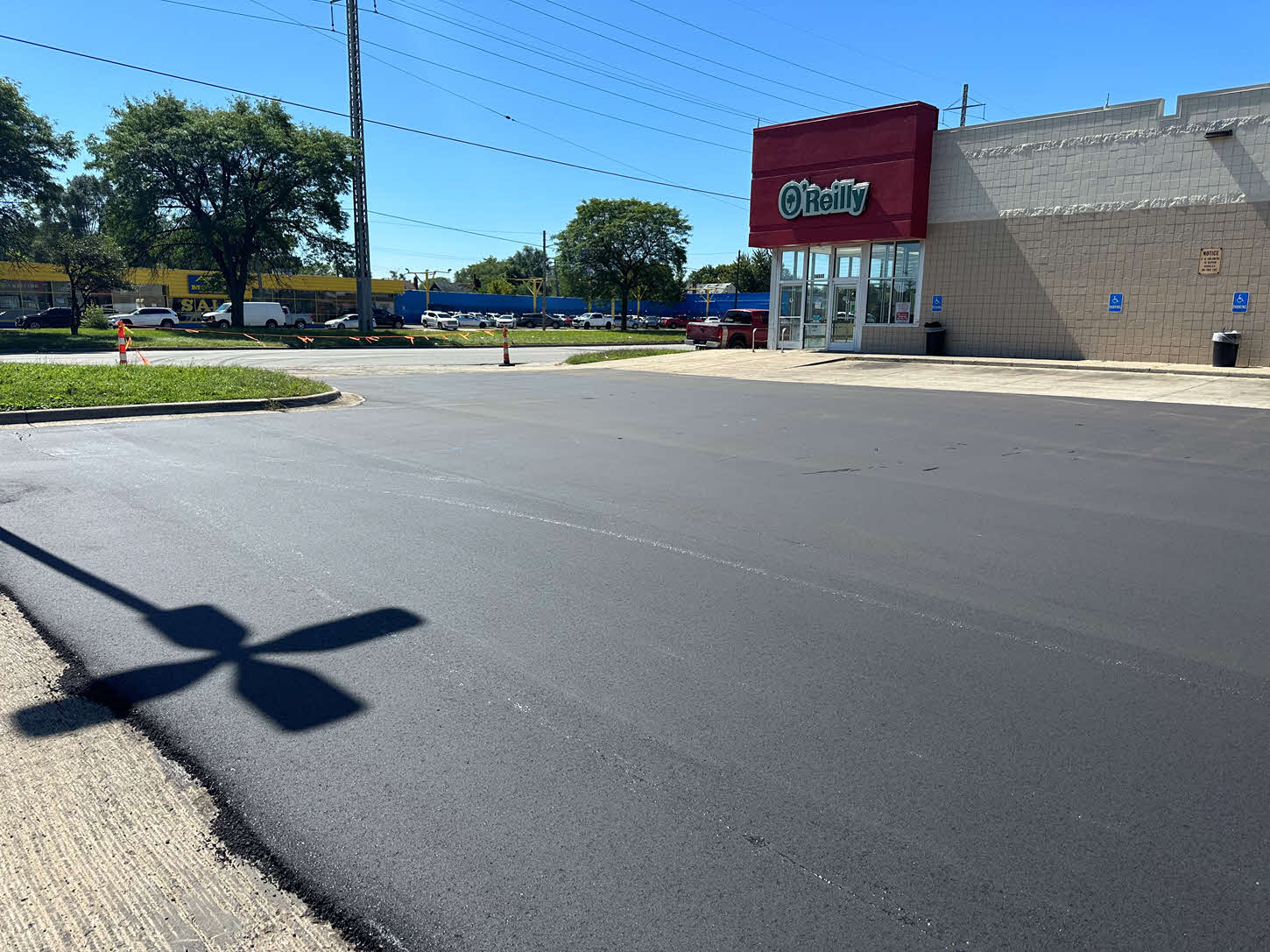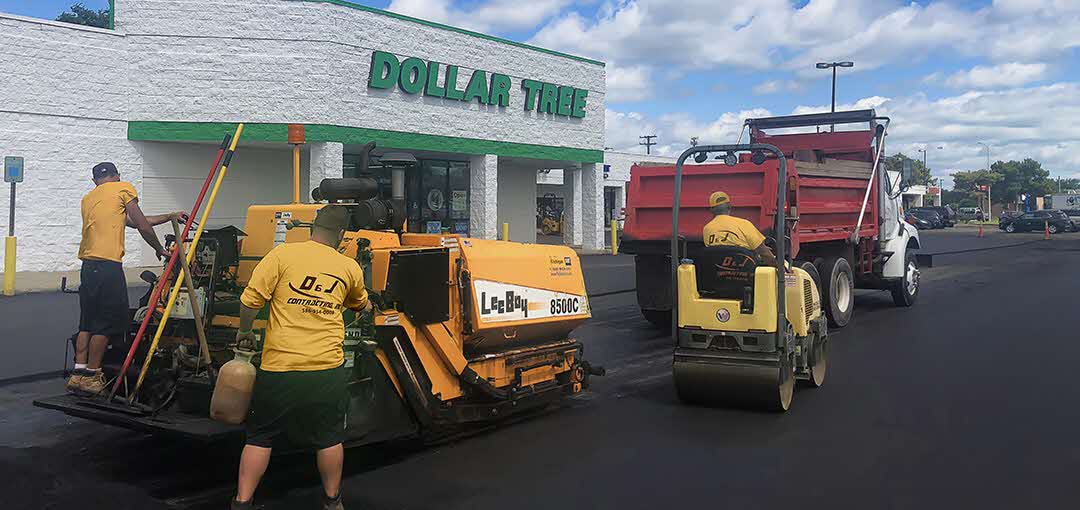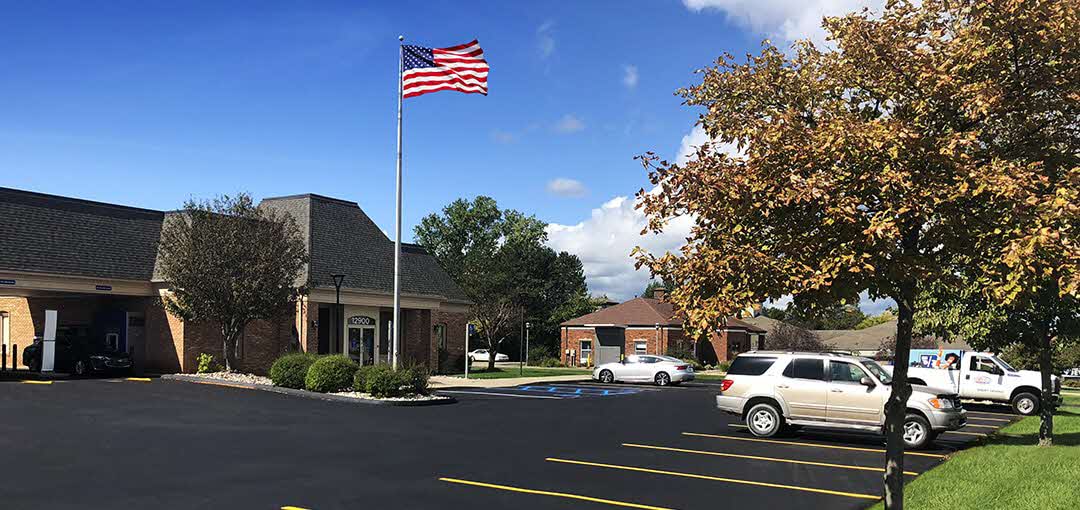Parking Lot Repaving inClinton Township, MI
Professional Parking Lot Repaving for a Fresh, Smooth Finish
We Are Locally Owned & Operated For Over 37 Years
Contact Us Today!
We Serve Businesses In And Around The Following Cities:
About Parking Lot Repaving
Comprehensive Guide to Parking Lot Repaving in Clinton Township for Commercial Properties
Understanding the Importance of Parking Lot Upkeep
Parking lots are often the first physical interaction customers have with a commercial property. In Clinton Township, where businesses range from retail outlets to corporate offices, the state of a parking lot can significantly impact a company’s reputation and customer satisfaction. A well-maintained parking lot not only enhances the aesthetic appeal of a property but also ensures safety, functionality, and long-term viability. Over time, wear and tear can take a toll on asphalt surfaces, necessitating a timely intervention—parking lot repaving. This guide delves into the complexities and nuances of repaving projects, offering key insights into their process, benefits, and real-world applications, while naturally guiding local businesses towards the professional services offered by contractors such as D&J Contracting.
The Process of Parking Lot Repaving
Parking lot repaving is a meticulous process that restores the structural integrity and visual appeal of a commercial property’s parking area. This initiative begins with thorough planning and assessment. Contractors analyze the current condition, identifying issues such as potholes, cracks, or drainage problems. Such evaluations inform the subsequent step—designing a customized repaving plan. This plan often incorporates elements to adjust the existing design to address identified flaws, ensuring a more robust end result.
Once the initial assessment is complete, preparation of the site becomes paramount. This stage involves clearing the lot of debris and pre-existing coatings. A clean surface ensures optimal adhesion of the new asphalt layer. In some cases, milling may be necessary to remove the topmost layers of the old asphalt, providing a fresh surface for overlay. It is during this preparatory stage that potential challenges like sub-base instability are addressed, reinforcing the infrastructure before laying new asphalt.
Following preparation, the repaving process moves into the asphalt laying stage. Here, contractors apply a new asphalt layer using specialized equipment for uniform distribution. The skillful work of professionals, such as D&J Contracting, during this stage is crucial. These experts ensure that the new layer is even, effectively sealed to prevent future water infiltration, and capable of enduring the rigors of daily traffic. After laying the asphalt, compacting takes place, followed by finishing touches such as striping, which restores functional indicators like parking lines and directional arrows, crucial for traffic flow and safety.
Benefits of Parking Lot Repaving
Repaving a parking lot offers several benefits that extend beyond mere aesthetics. The most immediate advantage is safety. A smooth surface reduces the risk of accidents for both vehicles and pedestrians, a particularly crucial consideration in high-traffic areas of Clinton Township. Next, repaving contributes to property value. A well-maintained exterior reflects positively on the business, potentially enhancing its marketability and appeal to customers and clients alike.
Moreover, repaving is cost-effective in the long run. While the initial parking lot repaving cost might seem substantial, it is a strategic investment. Addressing minor issues early prevents more significant, costly repairs in the future. Enhancing the surface’s longevity reduces the frequency of future interventions, ultimately conserving resources. Additionally, repaving can integrate new environmental considerations and innovations, such as permeable asphalt, which facilitates better water runoff management and aligns with sustainable development goals.
Lastly, a newly paved lot can improve functionality. Businesses can use this opportunity to reevaluate the layout, optimizing space and flow to accommodate larger vehicles or increase parking capacity, an essential factor for expanding enterprises in bustling commercial hubs like Clinton Township.
Real-World Applications and Examples
The value of parking lot repaving becomes especially evident when examining real-world applications in Clinton Township. Take, for example, a local shopping center that recently underwent a repaving project. Prior to the undertaking, the parking lot was plagued with cracks and potholes, leading to numerous complaints from patrons about vehicle damage and difficulties navigating the space. Post-repaving, not only were these issues resolved, but customer satisfaction soared, reflected in increased foot traffic to the shops within.
Restaurants in the area have also benefitted significantly. Outdoor dining has surged in popularity, and establishments with a newly paved lot have successfully converted parts of their parking area into appealing outdoor seating spaces. This adaptability not only expands service capacity but also enhances customer experiences, thereby boosting revenue.
Commercial properties with delivery and logistics operations benefit markedly from repaving as well. Effective layout designs incorporated during repaving allow for smoother loading and unloading, reduce turnaround times, and increase operational efficiency, bolstering overall business productivity.
Factors Influencing Repaving Costs
The parking lot repaving cost is influenced by several factors. The size of the lot is a primary determinant—larger areas require more materials and labor, increasing overall expenses. The current condition also plays a significant role. A surface in relatively good condition may only need an overlay, while a severely degraded lot might require full-depth reconstruction, impacting costs significantly.
Additionally, the choice of materials can influence costs. While traditional asphalt is common, businesses might opt for high-performance variants that, although initially more expensive, offer extended durability and performance. Other factors include site accessibility, regional labor rates, and the complexity of the lot’s layout, which can add to the overall cost.
Business owners should also consider the time of year. Scheduling repaving during peak construction season might result in higher rates due to increased demand, whereas opting for off-peak seasons could yield cost savings.
Partnering with Professional Contractors
The expertise of professional contractors is invaluable when undertaking a repaving project. Reputable service providers like D&J Contracting offer comprehensive solutions that begin with insightful consultations to understand the unique needs of each business. Their knowledge of the latest industry practices ensures that projects are executed efficiently, within budget, and to the highest standards of quality.
Moreover, professional contractors offer warranties and post-project support, giving businesses peace of mind with the assurance that their investment is protected. This reliability allows business owners to focus on core operations with the confidence that their parking infrastructure is in capable hands.
By choosing a contractor experienced in the nuances of Clinton Township’s commercial landscape, businesses can benefit from tailored solutions that accommodate local conditions and requirements.
Ultimately, a well-maintained parking lot stands as testament to a business’s commitment to excellence and customer satisfaction. As you contemplate opportunities for improvement, consider contacting experts like D&J Contracting to explore how their comprehensive repaving services can transform your property into an asset that benefits both business operations and customer experiences.
Parking Lot Repaving Gallery


Call Us Today to receive your Free Quote for
Parking Lot Repaving in Clinton Township
Serving: Clinton Township, Michigan

About Clinton Township, Michigan
The first settlement on the land that is now Clinton Township was called Gnadenhuetten and was established in 1782 by Rev. David Zeisberger, but closed in 1786. It was organized as “Huron Township” on August 12, 1818, named after what was then known as the Huron River. Because of confusion with another Huron River south of Detroit, on July 17, 1824, the Michigan Territorial Legislature renamed both the township and the river after DeWitt Clinton, the popular governor of New York from 1817 to 1823 who was largely responsible for building the Erie Canal which enabled many settlers to come to Michigan.
Moravian Drive is the township’s oldest road, dating back to the days when Moravian missionaries settled to attempt to convert the local Native Americans.
Clinton Township is in south-central Macomb County. The city of Mount Clemens, the Macomb county seat, is bordered on three sides by the northeast part of the township.
According to the United States Census Bureau, Clinton Township has a total area of 28.37 square miles (73.5 km), of which 28.03 square miles (72.6 km) are land and 0.35 square miles (0.91 km), or 1.22%, are water. The Clinton River, for which the community is named, is formed from three branches within the township. It runs east into Harrison Township, where it flows into Lake St. Clair. The township is home to many parks, notably George George Memorial Park.
There are two unincorporated communities in the township:
- Broad Acres is located in the southeastern portion on M-3/Gratiot Avenue between 15 Mile and Quinn Roads (42°32′57″N 82°54′08″W / 42.54917°N 82.90222°W; Elevation: 610 ft./186 m.).
- Cady is located in the southwestern portion at Utica and Moravian Roads (42°33′37″N 82°57′52″W / 42.56028°N 82.96444°W; Elevation: 614 ft./187 m.). It was founded in 1833 by Chauncey G. Cady. Cady served for a time as township supervisor and was also a member of the state legislature. It had a post office from 1864 until 1906.
| Census | Pop. | Note | %± |
|---|---|---|---|
| 2000 | 95,648 | — | |
| 2010 | 96,796 | 1.2% | |
| 2020 | 100,513 | 3.8% | |
| 2023 (est.) | 99,377 | −1.1% | |
| U.S. Decennial Census | |||
| Race / Ethnicity (NH = Non-Hispanic) | Pop 2000 | Pop 2010 | Pop 2020 | % 2000 | % 2010 | % 2020 |
|---|---|---|---|---|---|---|
| White alone (NH) | 86,042 | 78,062 | 72,926 | 89.96% | 80.65% | 72.55% |
| Black or African American alone (NH) | 4,424 | 12,509 | 17,428 | 4.63% | 12.92% | 17.34% |
| Native American or Alaska Native alone (NH) | 223 | 230 | 192 | 0.23% | 0.24% | 0.19% |
| Asian alone (NH) | 1,597 | 1,723 | 2,170 | 1.67% | 1.78% | 2.16% |
| Pacific Islander alone (NH) | 11 | 29 | 19 | 0.01% | 0.03% | 0.02% |
| Other race alone (NH) | 82 | 82 | 335 | 0.09% | 0.08% | 0.33% |
| Mixed race or Multiracial (NH) | 1,605 | 1,871 | 4,449 | 1.68% | 1.93% | 4.43% |
| Hispanic or Latino (any race) | 1,664 | 2,290 | 2,994 | 1.74% | 2.37% | 2.98% |
| Total | 95,648 | 96,796 | 100,513 | 100.00% | 100.00% | 100.00% |
As of the census of 2010, there were 96,796 people, 42,036 households, and 25,678 families residing in the township. The racial makeup of the township was 82.08% White, 13.04% African American, 0.28% Native American, 1.79% Asian, 0.03% Pacific Islander, 0.61% from other races, and 2.17% from two or more races. Hispanic or Latino people of any race were 2.37% of the population. By 2016, the township’s population was estimated to have surpassed 100,000.
In 2000, there were 40,299 households, out of which 28.1% had children under the age of 18 living with them, 48.7% were married couples living together, 10.9% had a female householder with no husband present, and 36.6% were non-families. 30.8% of all households were made up of individuals, and 10.8% had someone living alone who was 65 years of age or older. The average household size was 2.35 and the average family size was 2.98.
In 2000, 22.4% of the population was under the age of 18, 9.1% from 18 to 24, 30.9% from 25 to 44, 23.4% from 45 to 64, and 14.3% who were 65 years of age or older. The median age was 37 years. For every 100 females, there were 92.4 males. For every 100 females age 18 and over, there were 88.5 males. The median income for a household in the township was $50,067, and the median income for a family was $61,497. Males had a median income of $48,818 versus $29,847 for females. The per capita income for the township was $25,758. About 4.2% of families and 5.8% of the population were below the poverty line, including 7.4% of those under age 18 and 6.8% of those age 65 or over.
Chippewa Valley Schools, with two high schools (Chippewa Valley and Dakota), and Clintondale Community Schools, with one high school (Clintondale High), are the primary school districts in the township. Other school districts that operate within Clinton Township are L’Anse Creuse, Fraser, and Mount Clemens.
Call Us Today to receive your Free Quote for
Parking Lot Repaving in Clinton Township
Related Services in Clinton Township, Michigan
We Serve Businesses In The Following Zip Codes:
48007, 48015, 48021, 48026, 48035, 48036, 48038, 48042, 48043, 48044, 48045, 48046, 48047, 48048, 48050, 48051, 48066, 48071, 48080, 48081, 48082, 48083, 48084, 48085, 48088, 48089, 48090, 48091, 48092, 48093, 48098, 48099, 48225, 48230, 48236, 48310, 48311, 48312, 48313, 48314, 48315, 48316, 48317, 48318, 48397